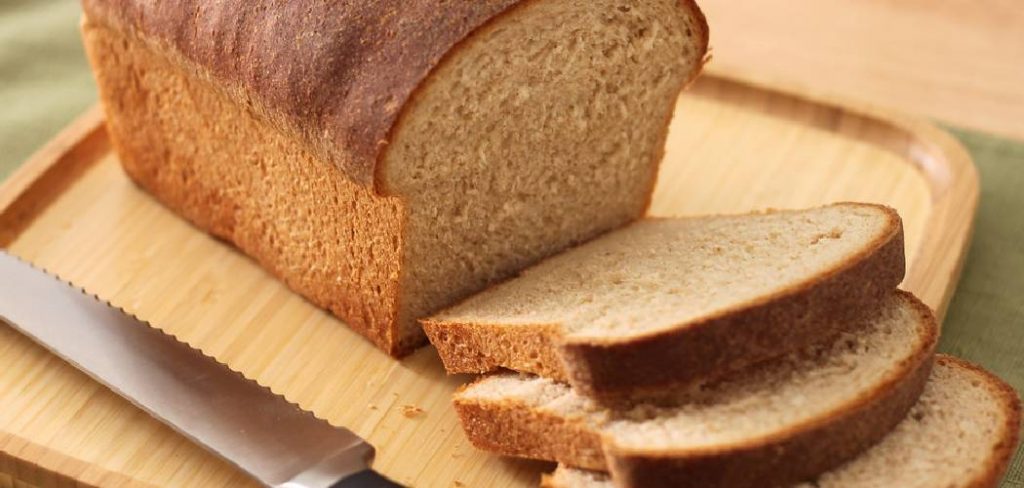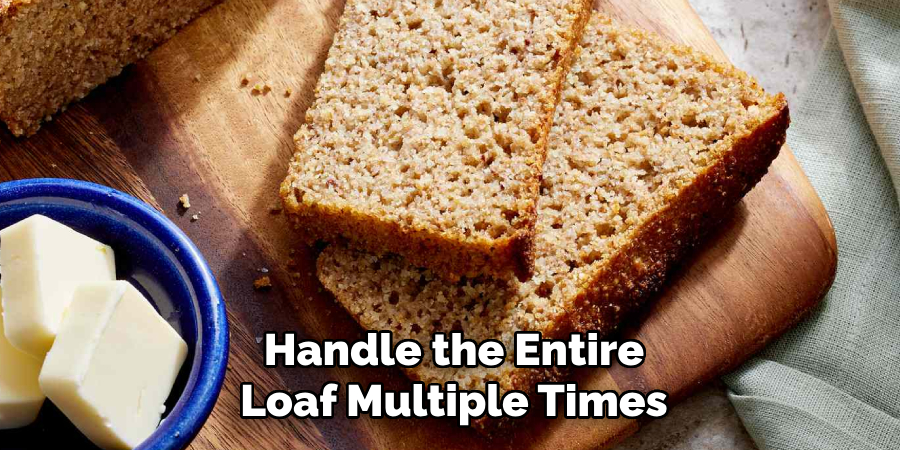Ezekiel bread is a nutritious and wholesome choice that many people incorporate into their diets. However, due to its lack of preservatives, it requires proper storage to maintain its freshness and prevent spoilage. Understanding the best practices for storing Ezekiel bread can help you enjoy its flavor, texture, and nutritional benefits for a longer time.
This guide on how do i store ezekiel bread will walk you through the most effective methods to store Ezekiel bread and ensure it stays fresh.

Why Store Ezekiel Bread?
Ezekiel bread is made from a combination of sprouted grains, legumes, and seeds. Unlike regular bread, which often contains added sugars and preservatives, Ezekiel bread is free from these additives. As a result, it has a shorter shelf life and requires special storage conditions to maintain its freshness.
You might be wondering why it’s worth the extra effort to store Ezekiel bread properly. The answer is simple – for its nutritional benefits. Sprouting grains, legumes, and seeds increases their nutrient content and makes them easier to digest. Ezekiel bread contains a variety of vitamins, minerals, and plant-based protein that can help support a healthy diet.
With proper storage, you can enjoy all these benefits without worrying about your bread going stale or growing mold.
8 Simple Step-by-step Guidelines on How Do I Store Ezekiel Bread
Step 1: Allow the Bread to Cool
If you’ve purchased freshly baked Ezekiel bread or made it at home, it’s important to allow the bread to cool completely before storing it. Warm bread creates moisture inside storage containers or bags, which can lead to mold growth and spoilage.
Place the bread on a wire rack in a well-ventilated area and wait until it reaches room temperature. Cooling the bread properly ensures it remains fresh and ready for storage.
Step 2: Slice the Bread
Slicing Ezekiel bread before storing it is a great way to ensure it stays fresh. Sliced bread has a larger surface area, which allows for better air circulation and reduces the risk of mold formation.
If you don’t plan on finishing the whole loaf in one sitting, slice only what you need and store the remaining loaf. This will also save you from having to handle the entire loaf multiple times, increasing the risk of contamination.

Step 3: Choose Suitable Containers
The type of container you use to store your Ezekiel bread can make all the difference in preserving its freshness. Opt for airtight containers with good seals that prevent air and moisture from entering.
Glass or plastic food storage containers with locking lids work well for storing sliced bread. Alternatively, you can use resealable plastic bags specifically designed for bread storage.
Step 4: Store at Room Temperature
Ezekiel bread is best stored at room temperature. Avoid placing it in the refrigerator, as this can cause the bread to dry out quickly and lose its texture and flavor.
Instead, store your bread in a cool, dry place away from direct sunlight and heat sources. A pantry or kitchen cabinet is an ideal spot.
Step 5: Consider Using a Bread Box
If you don’t have suitable containers or prefer not to use plastic bags, consider investing in a bread box. A bread box is specifically designed for storing bread and maintains an ideal environment for keeping it fresh.
Make sure to choose one that provides good air circulation and has a tight-fitting lid.
Step 6: Wrap Loaves in Foil
If you have a whole loaf of Ezekiel bread, it’s best to wrap it in aluminum foil before storing it. This barrier helps retain moisture and prevents the bread from drying out or becoming stale quickly.
Ensure the entire loaf is covered with foil, leaving no exposed areas.

Step 7: Freeze for Long-term Storage
If you don’t plan on consuming your Ezekiel bread within a few days, consider storing it in the freezer. Freezing can extend its shelf life for up to three months without affecting its nutritional value.
Slice the bread and wrap each slice or loaf tightly in plastic wrap, then place them in a sealable freezer bag. Label and date the bag to keep track of when you stored it.
Step 8: Thaw Properly Before Consumption
When you’re ready to eat your frozen Ezekiel bread, make sure to thaw it properly. Avoid microwaving as this can cause the bread to become soggy or dry out unevenly. Instead, let the slices or loaf thaw at room temperature or toast them directly from frozen for a crispy texture.
Following these simple steps on how do i store ezekiel bread will help you store Ezekiel bread properly and maintain its freshness. Incorporate these guidelines into your routine, and you can enjoy delicious and nutritious Ezekiel bread whenever you want. Remember to check the expiration date on store-bought bread and consume it before it expires for optimal taste and nutrition.
Tips for Storing Ezekiel Bread
Here are some tips to keep in mind when storing Ezekiel bread:
Keep It Refrigerated:
The best way to store Ezekiel bread is by keeping it in the refrigerator. This will help slow down the sprouting process and extend its shelf life.
Use a Bread Bag:
If you have access to a bread bag, use it to store your Ezekiel bread. Bread bags are designed specifically for storing bread, allowing for proper air circulation while keeping the bread fresh.
Freeze Individual Slices:
To ensure you always have fresh Ezekiel bread on hand, freeze individual slices in plastic wrap or freezer-safe bags. This will allow you to take out only what you need without having to thaw the entire loaf.

Avoid Moisture:
Moisture is the enemy of Ezekiel bread. Make sure to keep it away from areas with high humidity or moisture, as this can cause mold growth and spoilage.
Check for Spoilage:
If you notice any signs of mold or a foul odor, it’s best to discard the bread. Consuming spoiled bread can lead to food poisoning and other health issues.
With these guidelines and tips in mind, you can confidently store your Ezekiel bread and enjoy its delicious taste and nutritional benefits for longer periods. Remember, proper storage is key to maintaining freshness and getting the most out of this nutritious bread.
How Much Will It Cost to Store Ezekiel Bread?
Storing Ezekiel bread effectively is a cost-efficient process when managed appropriately. The expenses associated with storage largely depend on the methods and tools used. Here’s a rough breakdown of potential costs:
Airtight Containers:
Investing in airtight containers with reliable seals can range from $5 to $20 per unit, depending on the size and material (plastic or glass). These containers can be used for other food storage purposes, making them a practical and affordable option.
Bread Box:
A bread box designed specifically for storing bread can cost anywhere from $20 to $50. While it may seem like a higher upfront cost, it can save you money in the long run by preserving your bread’s freshness and preventing waste.
Aluminum Foil:
The cost of aluminum foil varies depending on the brand and quantity purchased. However, this is a one-time expense that can be used for multiple loaves of Ezekiel bread.
Plastic Wrap/Freezer Bags:
Similar to aluminum foil, plastic wrap or freezer bags are budget-friendly options that can be used for multiple loaves. A roll of plastic wrap can cost between $2 to $5, while freezer bags range from $3 to $10 per pack.
Frequently Asked Questions
Q1: Is It Necessary to Store Ezekiel Bread in the Refrigerator?
A1: No, storing Ezekiel bread at room temperature is sufficient if you plan on consuming it within a few days. However, refrigeration can help extend its shelf life. The key is to keep it away from moisture and heat sources.

Q2: Can I Store Ezekiel Bread in the Freezer for Longer Periods?
A2: Yes, freezing can help preserve Ezekiel bread for up to three months. Just make sure to wrap it tightly and label it before placing it in the freezer.
Q3: How Do I Know When My Ezekiel Bread Has Gone Bad?
A3: Signs of spoilage include mold growth, a foul odor, or a slimy texture. If you notice any of these signs, it’s best to discard the bread. Always check the expiration date on store-bought bread as well. Eating spoiled bread can cause food poisoning and other health problems. It’s better to be safe than sorry!
Q4: Can I Reheat Frozen Ezekiel Bread?
A4: Yes, you can toast frozen Ezekiel bread directly for a crispy texture or let it thaw at room temperature before consuming it. Avoid microwaving as this can make the bread soggy or dry out unevenly.
Conclusion
Properly storing Ezekiel bread is essential to maintaining its freshness, flavor, and nutritional value. Whether you choose to store it at room temperature, refrigerate it, or freeze it for long-term use, following these guidelines on how do i store ezekiel bread will ensure your bread remains in the best condition possible.
Remember to keep it away from moisture, wrap it securely, and check for signs of spoilage before consuming. By incorporating these practices into your routine, you can enjoy the wholesome goodness of Ezekiel bread whenever you need it, reducing food waste and savoring its benefits for a healthier lifestyle.
Professional Focus
Angela Ervin, a former interior designer turned blogger, specializes in kitchen design and renovations. Through her website, she blends her passion for cooking with design expertise, sharing practical and creative ideas. Known for balancing functionality and beauty, Angela’s insightful content has made her a trusted voice in home design and lifestyle.
About the Author
Angela Ervin, an experienced interior designer and blogger, combines her passion for kitchen renovations with storytelling. Living in Petersburg with her family, she enjoys cooking and testing her projects firsthand. Known for her humor and relatable style, Angela shares creative, functional design insights through her content, making her a trusted voice in home design.
Education History
University: Virginia Commonwealth University
Degree: Bachelor of Fine Arts (BFA) in Interior Design
- Angela’s education at VCU focused on mastering core interior design principles, including spatial planning, color theory, materials selection, and sustainable design practices.
- She gained hands-on experience through studio projects and collaborative design exercises, which honed her ability to create functional and aesthetically pleasing environments.
- Her coursework also emphasized problem-solving and practical applications of design, preparing her for real-world projects like her self-directed kitchen renovations.
- The program’s strong foundation in both technical skills and creative expression shaped Angela’s ability to seamlessly integrate form and function in her work.


